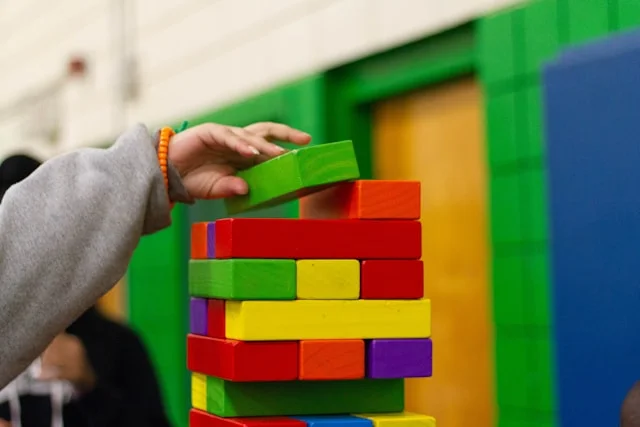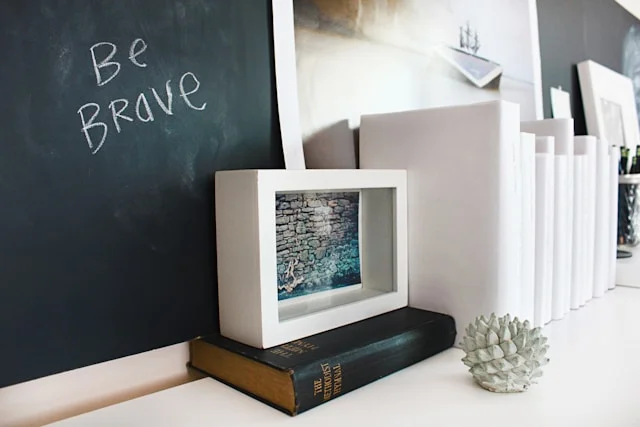Icebreaking activities for teams are small activities that help people to thaw out at the start of a group activity. They break the ice and get everyone speaking to each other and warmed up to participate in whatever follows.
Summary by The World of Work Project
Icebreaking Activities for Teams
Icebreakers are any small activity that gets people to interact with each other and relax into working together. They tend to be brief and to include as many people as possible. They don’t need to be complicated, but you do need to help relax the people you’d like to work together effectively.
When are they useful?
Icebreaking activities for teams are generally considered to be best when there are new groups, but in truth they are always useful in any activity and in any team, regardless of how well the team has already gelled and how well everyone knows each other.
How do they work?
Icebreakers remove tension and fear of rejection from an environment and they help people relax. Most individuals have some stress, anxiety, or other adrenal emotion related to being with a group of people.
Icebreakers help people through the first stages of their interaction, help people build quick relationships, give them a common sense of purpose and identity or get them to share a common experience so they feel accepted.
What groups do they work in?
Icebreaking activities for teams are best for any group where people are going to need to work together. They work equally well for large and small groups, but you need appropriate icebreakers for the group you’re working with. The are helpful for established teams as well.
What types of activities do they include?
Icebreakers often focus on getting people to speak to each other and include the following forms:
- Introductory Icebreakers (a few things about yourself),
- Getting to you know (a bit deeper and more personal),
- How you’re feeling (checking in),
- Team-building (working together),
- Re-affirming (helping teams that know each other get back in the groove), or
- Thematic (aligned to a theme of an event, e.g. change).
Though, of course, icebreakers can really take any form that you’d like.
Below, we’ve captured several examples of activities that you might find helpful:
1 – Team Name and Logo Icebreaker Activity
This icebreaker activity is good for events where participants will be working together in groups at their tables or in virtual teams over a longer period of time.
It works by getting individuals to introduce themselves to each other and share some unique facts about themselves. The groups then use these facts as the inspiration from which to come up with a team name and from which to create a team logo.
The Activity
The facilitator starts the activity by ensuring that all of the participants are evenly spread across tables, or are in evenly sized groups. The best group size for this event is between 8 and 10.
Once the groups are created, the facilitator asks each table or group to spend a few minutes getting to know each other by introducing themselves and sharing an interesting or unique fact about themselves. As the groups are introducing themselves, the facilitator provides each table with a flip chart and some pens.
Once all the tables or virtual groups have finished their conversations, the facilitator asks each table to come up with a team name and team symbol or badge based on their unique or interesting facts, and to draw their logo and name on their flip-chart.
Once they have done this, the facilitator asks them to share their names and badges with the rest of the room. The teams will be referred to by these names for the remainder of the time that they are working together.
2 – Vegetable Introductions Icebreaker
This fairly silly and funny activity works as an energizer, icebreaker and a team building activity. It requires participants to draw themselves as a vegetable and introduce themselves, as that vegetable, to their neighbor.
The neighbor then introduces them as a vegetable to the wider group. The activity works best for groups between about 6 and 12 and can be completed sitting down.
How the activity works
As with all such activities, the vegetable introductions icebreaker needs someone to explain the activity to participants. This activity also requires each participant to have a pen and a piece of paper.
Whoever is leading it starts the activity by asking each participant to think about what vegetable they would be if they were a vegetable and why they’d be that vegetable. They and then ask them to draw a picture of themselves as that vegetable.
The facilitator then breaks the room into pairs and gives the pairs a few minutes to share their picture with their partner. While sharing these pictures, participants explain what vegetable they would be and why they would be that vegetable.
Once the pairs have completed their conversations, the facilitators ask them to swap pictures with each other. The facilitator then goes around the room asking each person to introduce the person they were paired up with to the group. They do this by introducing them as their vegetable. They share their vegetable picture and describe why they think they resemble that vegetable.
3 – Unique / Interesting Facts Icebreaker
This very simple icebreaker activity can be used in small or medium sized groups. In larger groups where multiple tables of participants are present, it can be used to break the ice at the table level.
All that happens in this icebreaker is that participants are asked to introduce themselves to the wider room / group, and say an interesting or unique fact about themselves.
We’re not huge fans of this one as we think it can feel pretty competitive to try and find something “interesting”.
4 – Circle of Memory Icebreaker Activity
This icebreaker activity works well in a medium sized group of 12-20 people.
The facilitator gets the group to stand in a circle and asks each person to think of a descriptive word that starts with the same letter as their name, e.g. “Athletic Alex” or “Creative Chris”.
The facilitator then explains that each of the participants in the activity is going to take turns introducing themselves to the group using their descriptions.
The catch is, that when it’s your turn, you’ll need to say the alliteration names of everyone before you before you can say your name.
For example, if you’re the third person after Alex and Chris you’ll need to say “Athletic Alex” and “Creative Chris” before you introduce yourself. If you make a mistake then the activity bounces back to the person before you and they need to reintroduce everyone before them and themselves again, then it’s back to you.
The Circle of Memory Icebreaker Activity finishes when the last person in the circle successfully introduces themselves to the room.
5 – Find your partner ice-breaking activity
This ice-breaker activity works well in medium to large sized groups where you have a bit of space and everyone is mobile.
In preparation for the session the facilitator comes up with list of easily paired items and finds and print a small picture of each of them. These could include things like “Micky Mouse” and “Mini Mouse”, “Horse” and Carriage”, “Batman” and “Robin”, etc.
The facilitator needs to ensure there are enough pictures so that every participant can have one. The facilitator also needs to ensure there are an even number of participants for the activity. If there are not, then the facilitator also needs to play.
How the Activity Works

The activity starts when participants enter the room. On entry, each participant has one of the pictures stuck to their back and is told not to discuss the pictures with anyone in the room.
Once all of the participants are in the room, the facilitator can explain the rules then start the activity.
The activity is quite simple in theory, though not always simple in practice. The participants have two objectives:
- They need to discover what the picture on their own back is, and
- With that knowledge they need to identify and pair up with the individual who has their partner image.
The trick is that the participants, obviously, cannot move their own pictures and the are only allowed to ask yes and no questions about their picture to discover what it is.
The way this activity usually works in practice is that the participants find someone to speak to, show them their image, then ask them a series of yes no questions until they guess correctly what their image is.
In some instances participants might get part way through guessing their picture with one partner, then move on to another. Ideally, a fair bit of circulation takes place. It’s possible to ensure this by modifying the rules to say that participants can only ask one question of each person that they speak to.
The activity ends once everyone taking part in the activity has found their partner.
6 – The Participant Bingo Icebreaker Activity
This activity is an icebreaker which involves individuals trying to match interesting facts to individuals. It works well with medium sized teams, usually between about 20 and 40.
The Preparation
This activity requires a bit of advanced information gathering as well as some printing. You should start this process a week or two before your event to ensure you have time to gather all the information you need.
1 – Ask each participant who will be attending your meeting / event to submit an interesting or unique fact about themselves.
2 – Once you’ve received all your facts, create a bingo form with each fact (without a name) taking the place of the numbers on a conventional bingo grid.
3 – Create an “answer sheet” so that you know which participant is matched to which interesting fact.
4 – Print enough copies of the bingo form so that each of your participants can have a copy.
The Activity
When your event starts, hand each participant one of these Bingo forms and ensure they have a pen.
Let them know that they’ll have 10-15 minutes to circulate the room speaking to each other and trying to find out the name of the person who submitted each of the interesting facts. When they match a person to a fact they should write the person’s name down on their bingo form.
The first person to have written a name against each of the facts on their sheet shouts “bingo”. They are deemed the winner of the participant bingo icebreaker activity. The facilitator then reveals the answers and hands out a small prize to the winner.
7 – Questions Cocktail Party
This icebreaker activity is basically speed networking. In it, participants discuss a set of questions that are aligned to the overall theme of a day or an event.
It’s a bit more serious than some other ice-breaking activities. It works well in medium or large sized groups who are focused on specific topics.
Preparation
Before the session, the facilitator thinks of four questions that are relevant for the overall theme of the day or the event, or which align to the overall purpose of the day. For example, if the purpose of an event is to build pride in an organizations, one of the questions might be: “What are you most proud of having achieved at work over the last year?”. The four questions should be divided into two sets of two questions.
To prepare for the ice-breaking session itself, the facilitator should write the questions on flip-chart paper or PowerPoint slides or whatever medium is best for the day, so that they can be shared with the participants.
The Activity
When the session starts, the facilitator asks the participants to stand up and find a partner. Once everyone has found a partner, the facilitator reveals the first pair of questions and asks the participants to discuss in pairs for 5 minutes.
At the end of the 5 minute discussion, the facilitator asks the participants to rotate and find a new partner. The facilitator then reveals the next set of questions and asks the pairs to discuss these for a further five minutes.
Depending on the size of the group, the facilitator may wish to ask the participants to share some of their thoughts and discussions after each 5 minute period. This will help further break the ice and give the participants a chance to speak in front of the wider group.
Depending on your objectives, group size and facilitation style, you can always ask the pairs to discuss one question at a time, perhaps for a shorter period of time, ask the participants to discuss in small groups or change the number of questions.
Learning More
Team building and ice-breaking activities are very important. They help build trust in teams and help progress team maturity. They can also reduce the risks of social threat and improve interpersonal awareness.
Being able to deliver them is a helpful facilitation and meeting skill. A few specific activities we’ve written about include: The Disassociated Word Game, Participant Bingo, Find Your Partner, Vegetable Introductions, and the Questions Cocktail Party.
You can learn more in our podcast on team building activities:
The World of Work Project View
Ice breaking is an important part of group activities and needs to be considered as an investment. The more effectively you break the ice at the start of any form of group activity, the more the attendees at the activity are likely to engage and contribute, and the more effective the group activity is likely to be.
There are many different types of icebreaking activities for teams. Some of them are dreadful, some of them are less so. It’s important to try and chose an activity that is right for the group in question and which doesn’t make everyone cringe. What you basically want to do is to give everyone the chance to speak a little, to get rid of their nerves and, if possible, to laugh a bit. It’s also important to choose and icebreaker that is inclusive for all the members of your group.
In our view, every team leader, manager or facilitator should know a few icebreakers and be ready to use them when required. Many of them don’t take any preparation or materials, so can be delivered without much notice or preparation.
How We Help Organizations
We provide leadership development programmes and consulting services to clients around the world to help them become high performing organizations that are great places to work. We receive great feedback, build meaningful and lasting relationships and provide reduced cost services where price is a barrier.
Learning more about who we are and what we do it easy: To hear from us, please join our mailing list. To ask about how we can help you or your organization, please contact us. To explore topics we care about, listen to our podcast. To attend a free seminar, please check out our eventbrite page.
We’re also considering creating a community for people interested in improving the world of work. If you’d like to be part of it, please contact us.
Sources and Feedback
This post has been informed primarily by our experiences over our careers and does not reference any specific sources. The wider internet has a huge amount of information on, and examples of, icebreakers.
We’re a small organization who know we make mistakes and want to improve them. Please contact us with any feedback you have on this post. We’ll usually reply within 72 hours.






